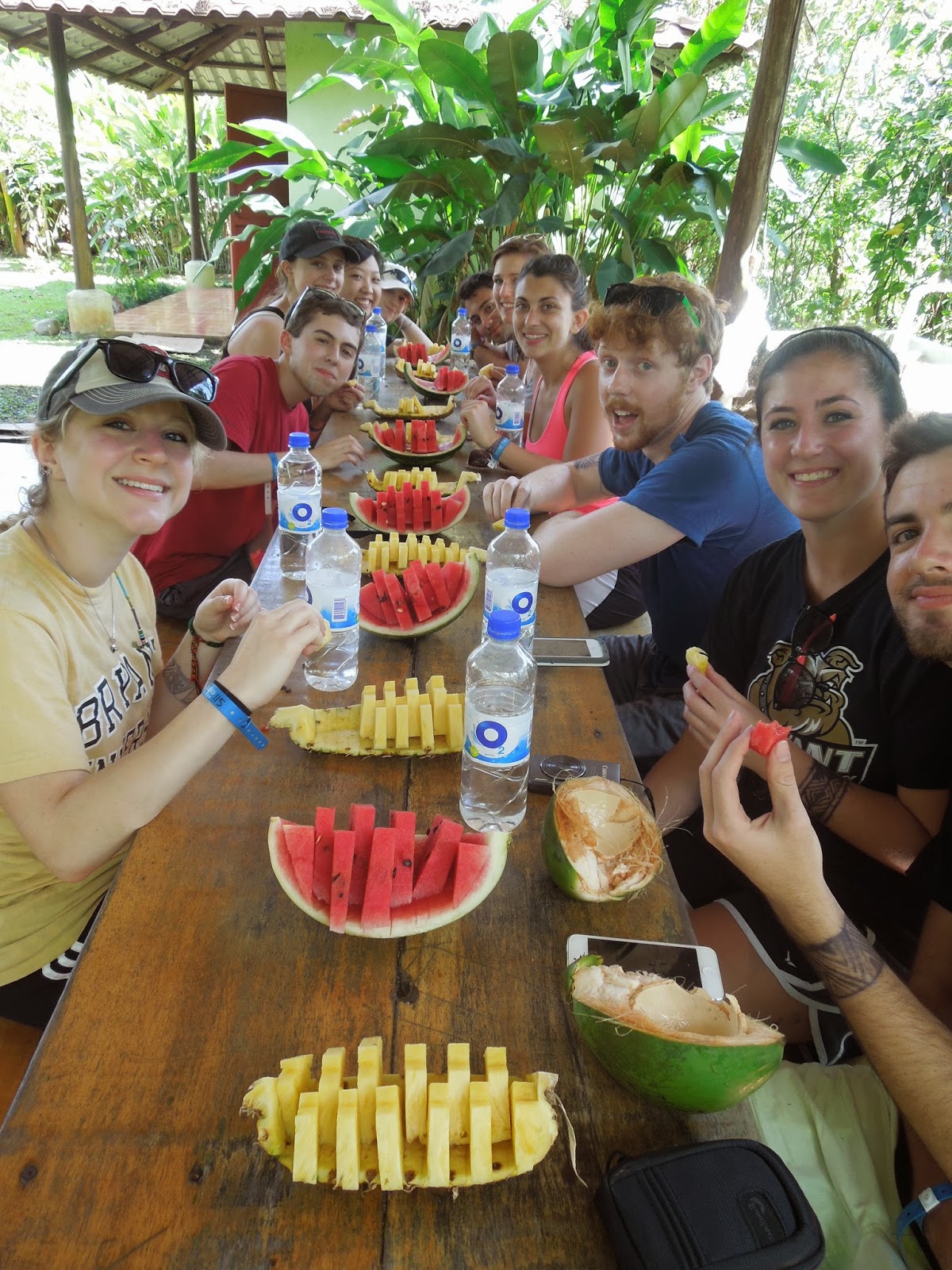The river was lined with 100s of different types of foliage. The guide on my boat, Edson, explained that all of the trees along the water have at least 500 different types of plants growing from the trees’ branches. Those that were most interesting were the strong, tall bamboo branches and the “Tourist Tree.” This tree is very tall and its branches are very white and clean. The tree gets its name because a few times a year, the trees’ bark turns a reddish color and then peels off, like a tourist with sunburn. These trees are in the best position for their roots to receive the most amount of water in the Costa Rican heat. However, it was evident that on some areas of the shore line the root systems were suffering from erosion due to farmers and logging.
Not only do the branches hold over 500 plants, they also were
perching areas for most of wildlife we came across like:
-
The “Piano Bird” is a waterfowl that gets its
name from its appearance. When the bird opens its wings, the feathers are black
and white stripped, like piano keys
-
The Hummingbirds were seen feasting off of bugs
along the eroded shore line as opposed to consuming nectar as we usually see
-
Three Howler Monkeys perched high up in the tree
eating breakfast
-
Two Spectacle Owls, which are the second largest
owls in Costa Rica
-
Twisted tight around the branches was the King
Oriel Snake. Although most of us are deathly afraid of snakes, this snake is
our friend. It feasts on dangerous snakes as its body is resistant to the other
snakes’ poisonous venom. It hangs from the branches when it is ready to attack,
leaving its tail dangling and using it as a whip, sharp enough to cut through
flesh of attacking predators
-
The Long Nose Bats (about 11) were sleeping
soundly upside-down on the trunk of a tree. The bats were so small they
literally look like bumps of a log. The bats come out at night and feast on
thousands of mosquitos.
Needless to say, this safari was a great welcome to Costa
Rica.
By:
Olivia Rustic




No comments:
Post a Comment